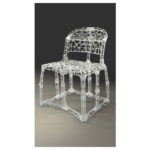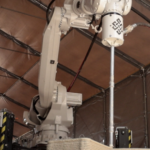University of Illinois Urbana-Champaign researchers are using 3D printing and machine learning to create a new type of bio-inspired material for bone repair. This material mimics the stress distribution of natural bone, offering a potentially better solution for fractured femurs compared to traditional metal plates.

Fractures of the femur, the long bone in your upper leg, are a common concern, especially for older adults. Traditional repair methods often involve metal plates and screws. While they get the job done, these can cause pain, loosening, and even further injury. This new approach takes a different path.
The team are using a “fully controllable computational framework” to design and create materials that mimic bone’s stress distribution properties. Imagine a material database and machine learning algorithms working together. They design a virtual material, then analyze the relationship between its structure and how it handles stress. But the researchers goes a step further. They use a special computational optimization algorithm to not only replicate bone’s structure but also maximize its stress-distributing capabilities.
The research doesn’t stop in the computer. The team 3D printed a full-scale resin prototype of their bio-inspired material and attached it to a model of a fractured femur. This tangible model allowed them to test its effectiveness in the real world, confirming the possibility of creating synthetic materials that mimic how biological systems grow.
This isn’t just about fixing broken femurs. The researchers envision this technique creating implants that actively stimulate bone repair. By providing optimized support and reducing stress on the fracture site, these implants could significantly improve healing times and outcomes.
Source: eurekalert.org









